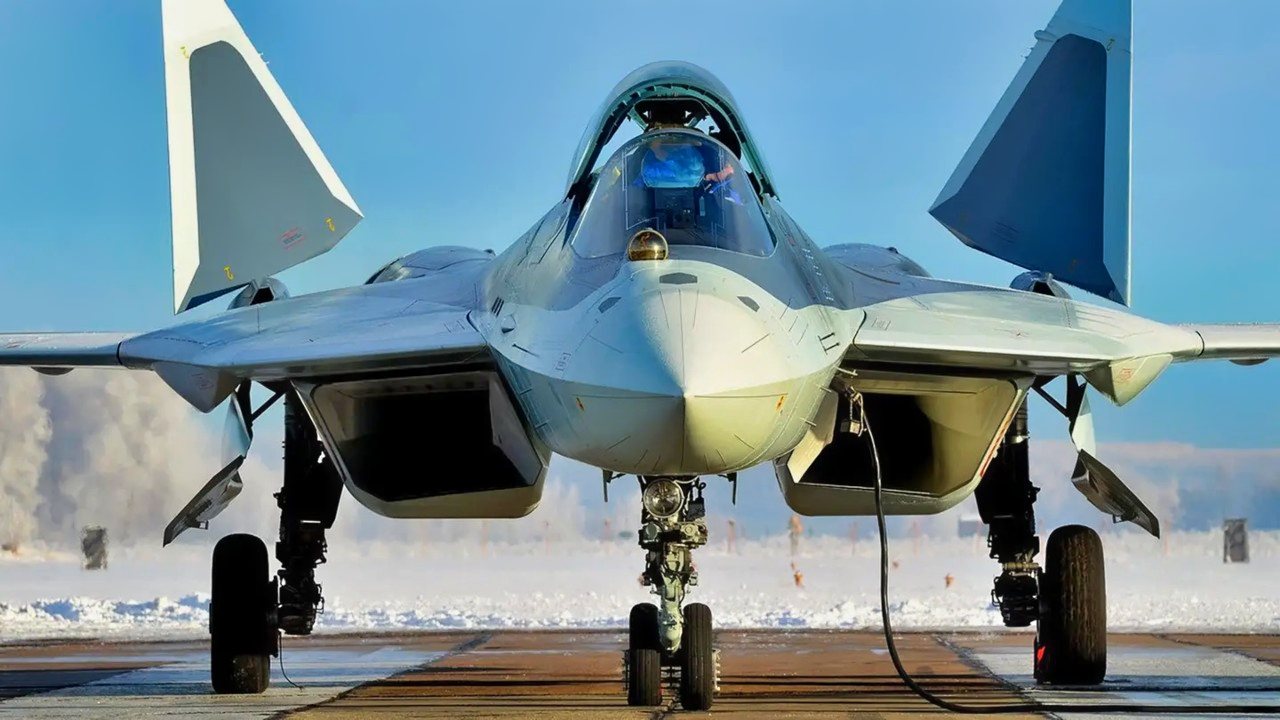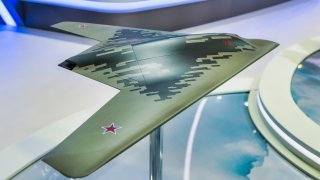S-70 Okhotnik-B: Russia Might Now Have a 'Cheap' Stealth Drone
The U.S. Air Force’s Next Generation Air Dominance (NGAD) program is facing competition from Russia's S-70 Okhotnik-B, a highly autonomous combat UAV developed by Sukhoi. First tasked in 2011 and with prototypes visible by 2017, the S-70 shares components with the Su-57 fighter, including internal weapons bays.
Summary and Key Points: The U.S. Air Force’s Next Generation Air Dominance (NGAD) program is facing competition from Russia's S-70 Okhotnik-B, a highly autonomous combat UAV developed by Sukhoi. First tasked in 2011 and with prototypes visible by 2017, the S-70 shares components with the Su-57 fighter, including internal weapons bays.

-The UAV can carry 2.8 tons of munitions, reach speeds over 620 mph, and features stealth technologies.
-Initially expected to enter production in 2024, the timeline may be delayed due to the war in Ukraine. The S-70’s capabilities highlight its role in the global race for sixth-generation air dominance.
Sukhoi S-70 Okhotnik-B: Russia’s Advanced Combat UAV for the Future
The U.S. Air Force’s Next Generation Air Dominance program, or NGAD, has plenty of competition. It will not be the only sixth-generation fighter platform in the skies. Beijing and Moscow are fielding their own respective next-gen fighters, and the race is on to get there first.
Like the Air Force’s NGAD, Russia’s planned sixth-generation fighter jet is expected to fly alongside a fleet of highly autonomous unmanned aerial vehicles. Referred to in the U.S. as “drone wingmen,” these sophisticated airframes provide a lower-cost, unmanned option to accompany the manned aircraft. Russian manufacturer Sukhoi is developing the S-70 Okhotnik-B combat UAV to fulfill this role.
An Overview of the S-70’s Origins
Russia’s Defense Ministry first tasked engineers at Sukhoi with creating a new UAV system in 2011. The first prototype was seen in 2017, when the drone’s flying wing configuration was showcased. One year later, the S-70 carried out its first series of tests and was reportedly capable of reaching a top speed of 200 kilometers per hour in a speed and stop trial.
While Moscow refers to the S-70 “Hunter B” UAV as a sixth-generation platform that can penetrate outer space, the aircraft’s exact specs have not been confirmed. The S-70 is partly derived from its Mikoyan Skat predecessor and possesses several key components of the Sukhoi Su-57 fighter.
Between 2018 and 2022, Russian state-run media outlets reported that Hunter-B prototypes were being constructed at the Novosibirsk Chkalov Aviation Plant. They are believed to feature enhancements to onboard radio-electronic equipment and structural elements.
The S-70 was supposed to enter serial production in 2024, but the war in Ukraine may have pushed back this timeline.
The S-70 in Its “Wingman” Role
As mentioned previously, the Hunter-B should share several components with Moscow’s Su-57 fighter. Specifically, the aircraft is believed to feature similar internal weapons bays, meaning it will use the same beyond-visual-range weaponry.
The S-70’s real prowess will come from its armaments. The drone is expected haul a vast array of ordnance, including 250 caliber and 500 caliber bombs. According to Army Recognition, the UAV will also be able to carry unguided bombs weighing up to 1,000 kilograms, in addition to a range of air-to-surface and air-to-air missiles. In total, the drone can carry up to 2.8 tons of munitions in its two internal weapons bays.
Powered by the same AL-21 jet engine that drives the Su-27 fighter jet, the Hunter-B is capable of reaching speeds in excess of 620 miles per hour, according to Army Recognition:
“The drone can autonomously perform complex missions, including takeoff and landing, making it a formidable asset in modern warfare. Its ability to carry various types of munitions, from precision bombs to air-to-air and air-to-surface missiles, enhances its versatility on the battlefield. It also features stealth technologies, including a flat nozzle design that improves its radar invisibility, a critical factor in its effectiveness.”
Other Specs and Capabilities
Russia state-media outlets report the S-70 weighs roughly 20 tons, with a wingspan of 14 meters. Although this is smaller than the Su-57, the difference is minimal.
In 2023, The War Zone published a report analyzing video footage released by Moscow that shows a reporter walking across the wing of a Su-57 positioned next to an S-70 drone.The aircraft appear roughly the same size.

As detailed by the article, the new drone is “covered in various intakes and exhausts, as well as antennas, and a forward-facing camera system under the central part of the forward fuselage.” The UAV reportedly features electro-optical targeting, as well as radio and other reconnaissance equipment.
Considering shortages amid Russia’s ongoing Ukraine invasion, this sophisticated drone might not see combat any time soon. But it is an important entry in the race to field the next generation of aerial combat platforms.
About the Author: Maya Carlin
Maya Carlin, National Security Writer with The National Interest, is an analyst with the Center for Security Policy and a former Anna Sobol Levy Fellow at IDC Herzliya in Israel. She has by-lines in many publications, including The National Interest, Jerusalem Post, and Times of Israel. You can follow her on Twitter: @MayaCarlin.
Image Credit: Creative Commons.


